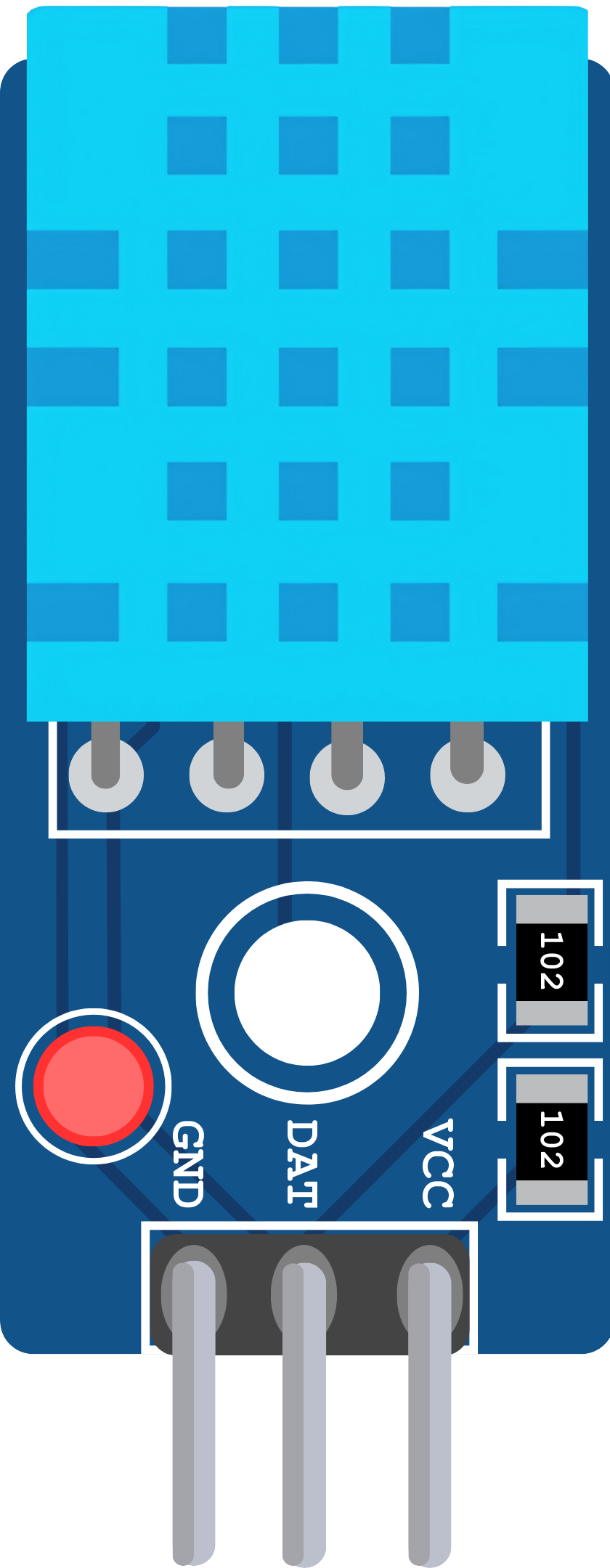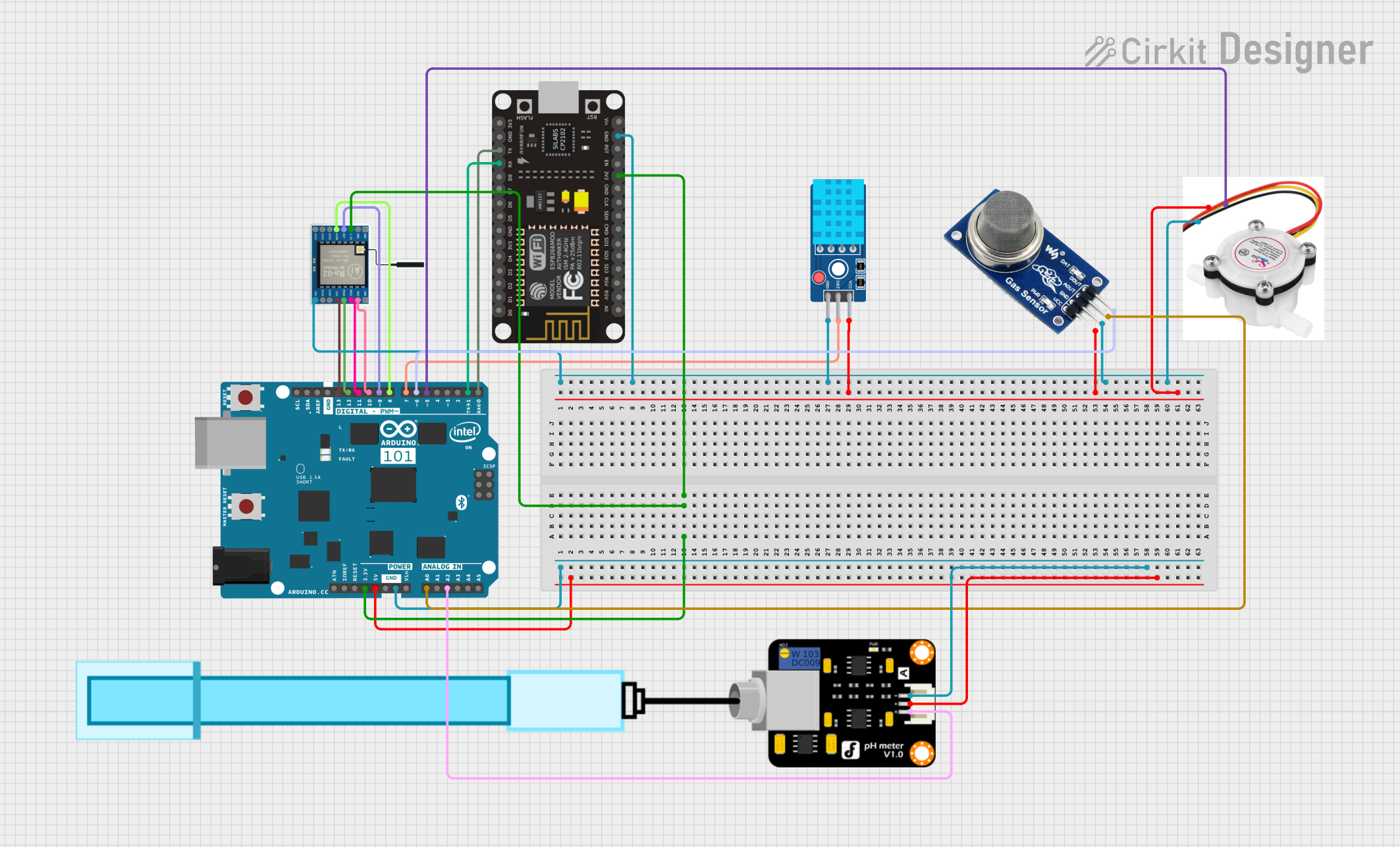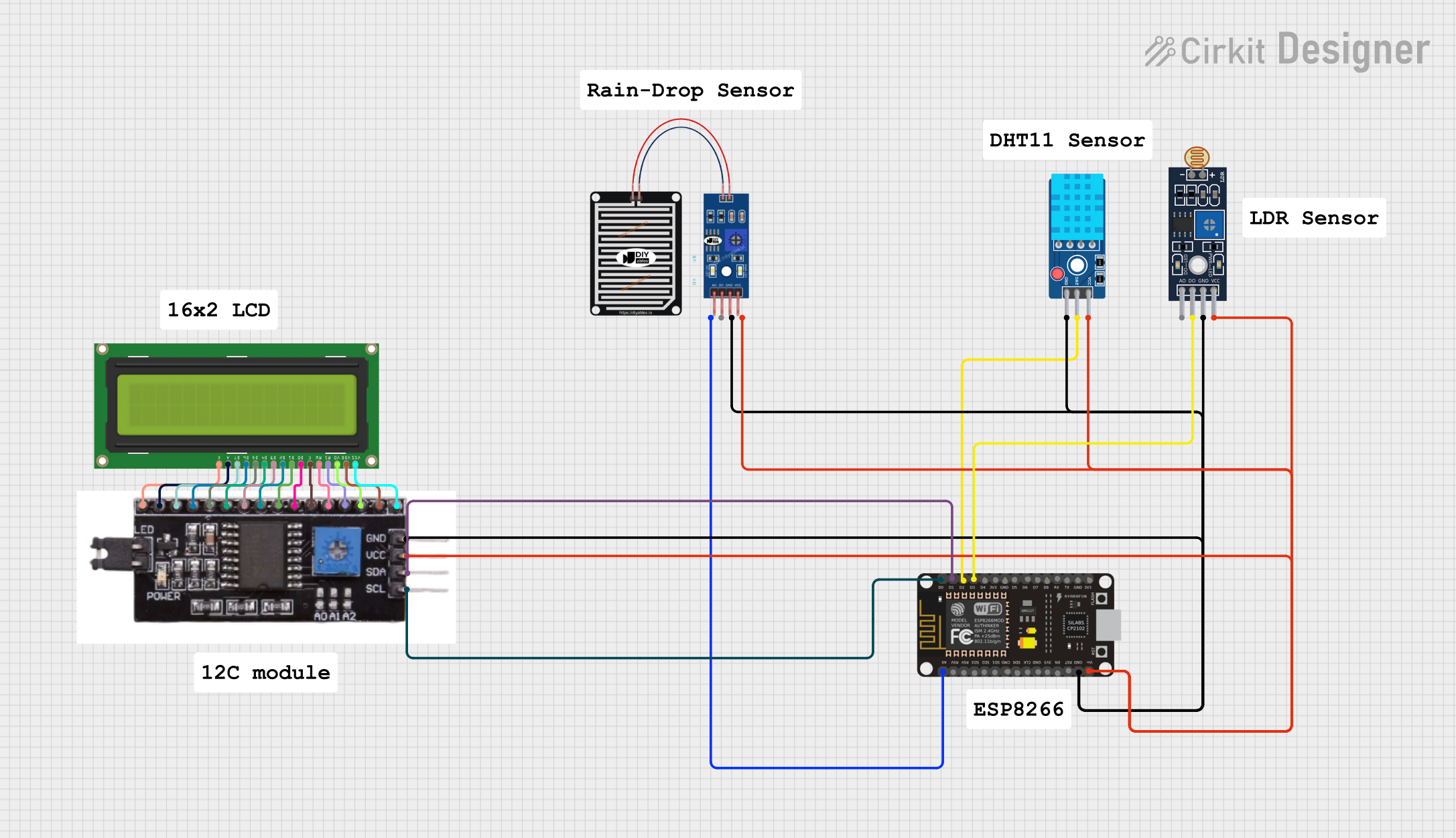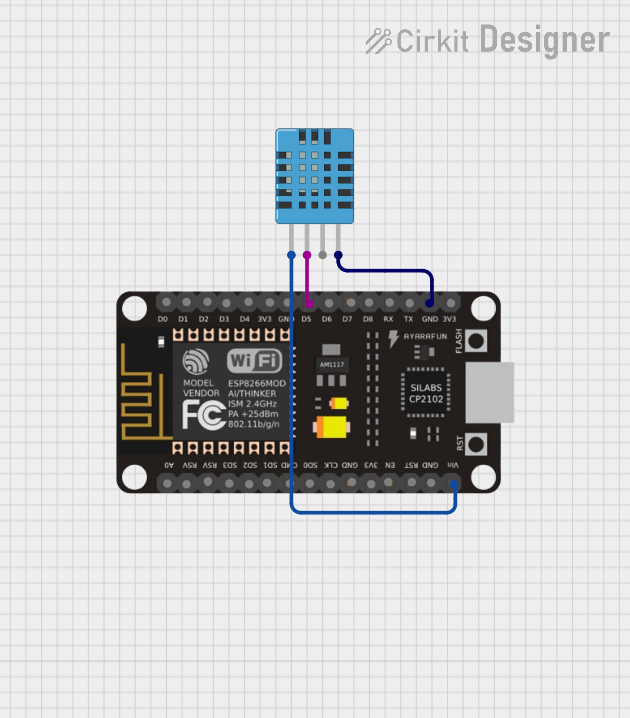
How to Use DHT11 Sensor Module: Examples, Pinouts, and Specs

 Design with DHT11 Sensor Module in Cirkit Designer
Design with DHT11 Sensor Module in Cirkit DesignerIntroduction
The DHT11 Sensor Module is a digital temperature and humidity sensor designed to provide accurate and reliable readings of environmental conditions. It features a single-wire digital interface, making it easy to integrate with microcontrollers such as Arduino, Raspberry Pi, and other development boards. The DHT11 is widely used in applications such as weather monitoring systems, HVAC (Heating, Ventilation, and Air Conditioning) systems, and home automation projects. Its compact size and low power consumption make it an excellent choice for both hobbyists and professionals.
Explore Projects Built with DHT11 Sensor Module

 Open Project in Cirkit Designer
Open Project in Cirkit Designer
 Open Project in Cirkit Designer
Open Project in Cirkit Designer
 Open Project in Cirkit Designer
Open Project in Cirkit Designer
 Open Project in Cirkit Designer
Open Project in Cirkit DesignerExplore Projects Built with DHT11 Sensor Module

 Open Project in Cirkit Designer
Open Project in Cirkit Designer
 Open Project in Cirkit Designer
Open Project in Cirkit Designer
 Open Project in Cirkit Designer
Open Project in Cirkit Designer
 Open Project in Cirkit Designer
Open Project in Cirkit DesignerTechnical Specifications
- Temperature Range: 0°C to 50°C (±2°C accuracy)
- Humidity Range: 20% to 90% RH (±5% accuracy)
- Operating Voltage: 3.3V to 5.5V
- Max Current Consumption: 2.5mA
- Output: Digital signal via single-wire protocol
- Sampling Rate: 1 reading per second (1 Hz)
- Dimensions: 15mm x 12mm x 5mm (sensor module)
Pin Configuration and Descriptions
The DHT11 Sensor Module typically has 3 or 4 pins, depending on the specific module. Below is the pin configuration for a common 3-pin module:
| Pin | Name | Description |
|---|---|---|
| 1 | VCC | Power supply pin. Connect to 3.3V or 5V. |
| 2 | DATA | Digital data output. Connect to a microcontroller GPIO pin with a pull-up resistor. |
| 3 | GND | Ground pin. Connect to the ground of the circuit. |
For a 4-pin module, the additional pin is typically NC (Not Connected) and can be ignored.
Usage Instructions
How to Use the DHT11 in a Circuit
- Power the Sensor: Connect the VCC pin to a 3.3V or 5V power source and the GND pin to the ground.
- Connect the Data Pin: Attach the DATA pin to a GPIO pin on your microcontroller. Use a 10kΩ pull-up resistor between the DATA pin and the VCC pin to ensure stable communication.
- Install Required Libraries: If using an Arduino, install the "DHT sensor library" by Adafruit from the Arduino Library Manager.
- Write the Code: Use the library functions to initialize the sensor and read temperature and humidity data.
Example Code for Arduino UNO
Below is an example Arduino sketch to read data from the DHT11 sensor:
#include "DHT.h" // Include the DHT library
#define DHTPIN 2 // Pin connected to the DATA pin of the DHT11
#define DHTTYPE DHT11 // Define the sensor type (DHT11)
DHT dht(DHTPIN, DHTTYPE); // Initialize the DHT sensor
void setup() {
Serial.begin(9600); // Start the serial communication
Serial.println("DHT11 Sensor Initialization");
dht.begin(); // Start the DHT sensor
}
void loop() {
delay(2000); // Wait 2 seconds between readings
float humidity = dht.readHumidity(); // Read humidity
float temperature = dht.readTemperature(); // Read temperature in Celsius
// Check if the readings are valid
if (isnan(humidity) || isnan(temperature)) {
Serial.println("Failed to read from DHT sensor!");
return;
}
// Print the results to the Serial Monitor
Serial.print("Humidity: ");
Serial.print(humidity);
Serial.print(" %\t");
Serial.print("Temperature: ");
Serial.print(temperature);
Serial.println(" °C");
}
Important Considerations and Best Practices
- Sampling Rate: The DHT11 has a sampling rate of 1 Hz, meaning you should wait at least 1 second between consecutive readings.
- Pull-Up Resistor: Always use a pull-up resistor (typically 10kΩ) on the DATA pin to ensure proper communication.
- Cable Length: Keep the cable length between the sensor and the microcontroller as short as possible to avoid signal degradation.
- Environmental Factors: Avoid placing the sensor in direct sunlight or near heat sources, as this can affect the accuracy of the readings.
Troubleshooting and FAQs
Common Issues and Solutions
No Data or Incorrect Readings:
- Ensure the sensor is powered correctly (3.3V or 5V).
- Check the pull-up resistor on the DATA pin.
- Verify the connections and ensure the DATA pin is connected to the correct GPIO pin.
"Failed to read from DHT sensor!" Error:
- Ensure the DHT library is installed and correctly included in your code.
- Check for loose or incorrect wiring.
- Ensure there is at least a 1-second delay between readings.
Inconsistent Readings:
- Ensure the sensor is not exposed to rapid temperature or humidity changes.
- Verify that the pull-up resistor is of the correct value (10kΩ is recommended).
FAQs
Q: Can the DHT11 measure negative temperatures?
A: No, the DHT11 can only measure temperatures in the range of 0°C to 50°C.
Q: Can I use the DHT11 with a 3.3V microcontroller?
A: Yes, the DHT11 operates within a voltage range of 3.3V to 5.5V, making it compatible with 3.3V systems.
Q: What is the difference between the DHT11 and DHT22?
A: The DHT22 offers a wider temperature and humidity range with higher accuracy compared to the DHT11, but it is also more expensive.
Q: How long is the sensor's response time?
A: The DHT11 has a response time of approximately 1 second for stable readings.
By following this documentation, you should be able to successfully integrate and use the DHT11 Sensor Module in your projects.